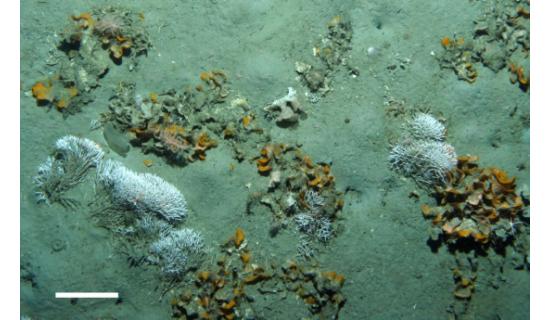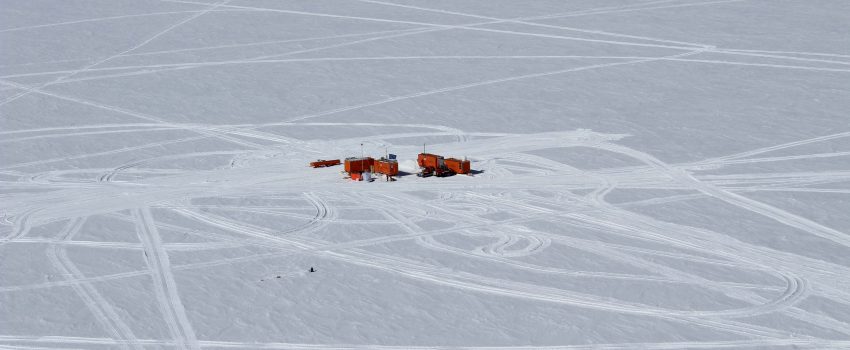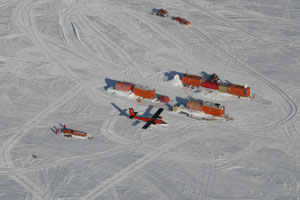Natural risk zones
Type of resources
Topics
INSPIRE themes
Keywords
Contact for the resource
Provided by
Formats
Representation types
Update frequencies
status
Scale
-

BIOROSS will explore these unique benthic ecosystems of the Ross Sea focusing on bryozoan, coralline algae, cold-water coral and calcifying sponge bioconstructions and their associated communities in order to build vulnerability maps related to global threats (ocean acidification and global warming). To understand the distribution and extent of the Ross Sea bioconstructions, the international team of BIOROSS will study the Antarctic material already available from PNRA and NIWA collections and take part to a new seabed exploration and collection in the Ross Sea on board of R/V Tangaroa. The multidisciplinary approach will address questions on the structure and functioning of builder species and associated communities by means of a suite of cutting-edge instrumentation for offshore survey and sampling, and state-of-the-art analytical facilities and methods, including multibeam echosounders, towed camera, DNA-barcoding, electron microscopy, computed tomography and mass spectrometry.
-

The project aims to determine the mass balance components in the Dome C drainage area and to study and monitor local glaciers in Victoria Land. The goal is to define the mass balance of the ice cap through the analysis of its altimetric variation with satellite systems and through the determination of the values of the positive (snow accumulation) and negative (flow of glaciers to the anchor line) components of the balance mass. Trought the study of the snow cores (collected as part of the ITASE project (XVII/XVIII expedition)), was determined the annual stratigraphy and evaluated the snow accumulation, the isotopic temperature and the chemical composition of the snow cores. Moreover analysis of geophysical data (GPR, GPS, RES, spectroradiometry) and remote sensing data were carried out for the study of the variability of snow accumulation, of the dynamics of the ice cap and of the flow of glaciers to the anchor line.
-

The project aims to estimate the current mass balance of glaciers and in particular of the Antarctic ice sheet by studying the space-time variations of the balance of snow accumulation through the integration of meteo-climatic and glaciological data. Analysis of weather-climatic and snow measurements collected by AWS stations (Dome C, C3, High Priestley, Talos Dome and a Nansen Ice Sheet) using sensors for measuring snow transport and measuring poles. Snow radar data collection of the Dumont d’Urville-Dome C traverse. Analysis of the chemical and isotopic composition of the collected snow samples. Analysis of satellite data to define the path of the Talos Dome-Dome C-Vostok-Dome B-Dome A crosspiece. High resolution chemical / isotopic analyzes (samples in trenches) for the study of post-depositional diffusion / re-emission processes that occur in the part of the snow closest to the surface. Study of the spatial variability of the snow accumulation at the TD site and along the ITASE traverse. Continuation of the analysis of the samples and geophysical data collected in the previous ITASE traverses.
-

The project aims to estimate the current mass balance of glaciers and in particular of the Antarctic ice sheet by studying the space-time variations of the balance of snow accumulation through the integration of meteo-climatic and glaciological data. Analysis of weather-climatic and snow measurements collected by AWS stations (Dome C, C3, High Priestley, Talos Dome and a Nansen Ice Sheet) using sensors for measuring snow transport and measuring poles. Snow radar data collection of the Dumont d’Urville-Dome C traverse. Analysis of the chemical and isotopic composition of the collected snow samples. Analysis of satellite data to define the path of the Talos Dome-Dome C-Vostok-Dome B-Dome A crosspiece. High resolution chemical / isotopic analyzes (samples in trenches) for the study of post-depositional diffusion / re-emission processes that occur in the part of the snow closest to the surface. Study of the spatial variability of the snow accumulation at the TD site and along the ITASE traverse. Continuation of the analysis of the samples and geophysical data collected in the previous ITASE traverses.
-

The Ice-ClimaLizer research investigates the role of two Antarctic bioconstructional and bioindicator organisms (bryozoan and coralline algae), responsible of promoting marine biodiversity, as proxies of environmental conditions (temperature, light intensity, pressure, oxygen, conductibility and pH). An experimental laboratory has been placed in Tethys Bay (Ross Sea) at 25.5 m deep. The project will compare 1 year of environmental data obtained via continuous recording (every hour) by CTD probe with reconstructed data obtained via geochemical proxies of skeletons/thalli of the investigated species. Data are collected from November 2018 to November 2019.
 ENEA Antarctic Data Center
ENEA Antarctic Data Center